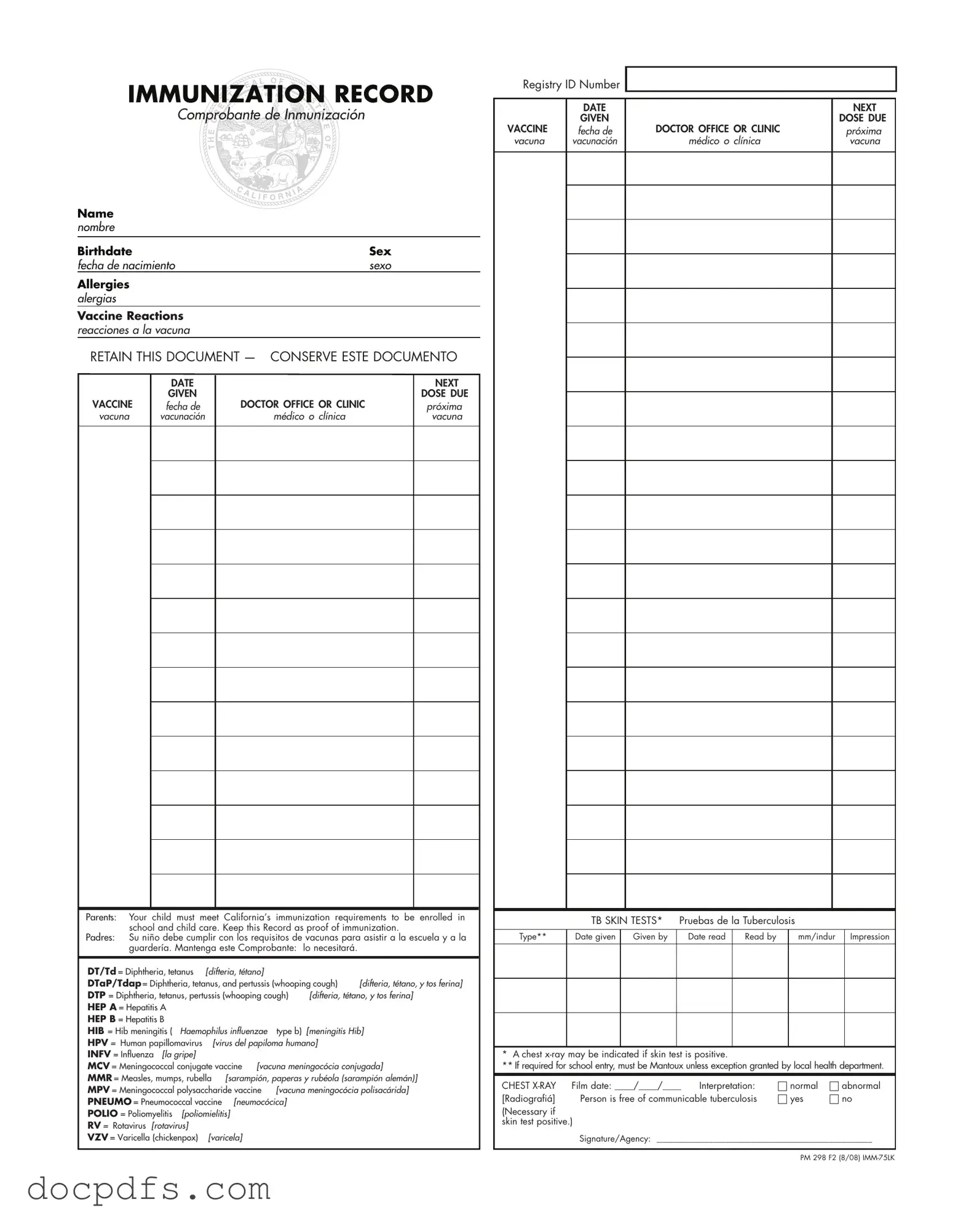The Immunization Record form is an important document that tracks a person's vaccination history. It includes details such as the individual's name, birthdate, and any allergies, as well as the vaccines they have received and any reactions to those vaccines. This form serves as proof of immunization, which is often required for school enrollment and childcare in California.
Why is it important to keep this document?
Keeping the Immunization Record is essential because it provides evidence that your child has received the necessary vaccinations. Schools and childcare facilities in California require proof of immunization to ensure the health and safety of all children. If you lose this document, obtaining a replacement may be difficult, so it’s best to store it in a safe place.
The form includes the following information:
-
Name of the individual
-
Birthdate
-
Sex
-
Allergies
-
Vaccine reactions
-
Dates of vaccines received
-
Next doses due
-
Doctor's office or clinic information
The Immunization Record may include various vaccines, such as:
-
DT/Td: Diphtheria and tetanus
-
DTaP/Tdap: Diphtheria, tetanus, and pertussis
-
HEP A and HEP B: Hepatitis A and B
-
MMR: Measles, mumps, and rubella
-
VZV: Varicella (chickenpox)
-
POLIO: Poliomyelitis
-
INFV: Influenza
What should I do if my child has an allergic reaction to a vaccine?
If your child experiences an allergic reaction to a vaccine, it is crucial to seek medical attention immediately. After addressing the reaction, inform your healthcare provider about the incident. They can document the reaction in your child’s Immunization Record and advise you on future vaccinations.
How can I obtain a copy of the Immunization Record if I lose it?
If you lose your Immunization Record, you can request a new copy from your child's healthcare provider or the clinic where the vaccinations were administered. They should have a record of your child's immunizations and can issue a new form. In some cases, you may also be able to access this information through your state’s immunization registry.
The TB skin test is a method used to determine if someone has been exposed to the bacteria that cause tuberculosis (TB). It involves injecting a small amount of a substance under the skin and then checking the area after a couple of days. If required for school entry, this test must be the Mantoux type unless an exception is granted by the local health department.
What happens if the TB skin test is positive?
If the TB skin test is positive, further evaluation is necessary. This may include a chest x-ray to check for active TB disease. The results of the x-ray will help determine if the individual is free of communicable tuberculosis or if treatment is needed.
Yes, the Immunization Record follows a specific format that includes sections for personal information, vaccination history, and any necessary tests like the TB skin test. It is designed to be clear and easy to understand, ensuring that all relevant information is captured for healthcare providers and schools.
How often should I check my child’s Immunization Record?
It is advisable to review your child's Immunization Record regularly, especially before school enrollment or childcare registration. This ensures that you are aware of any upcoming vaccinations and can keep track of your child's health needs. Regular checks also help prevent any last-minute scrambles for documentation.
